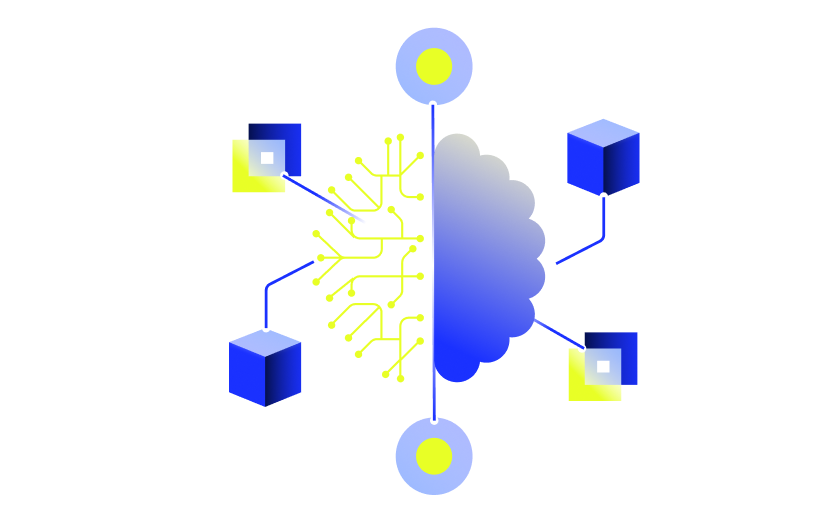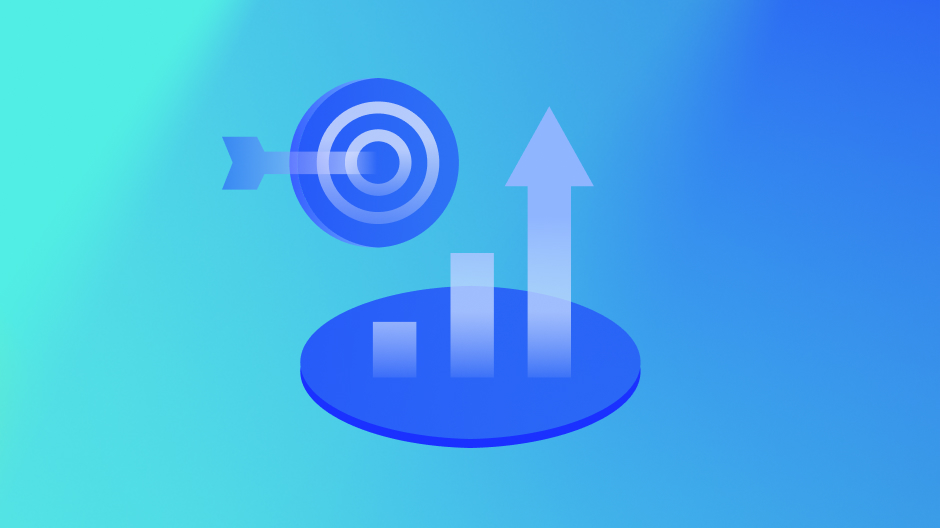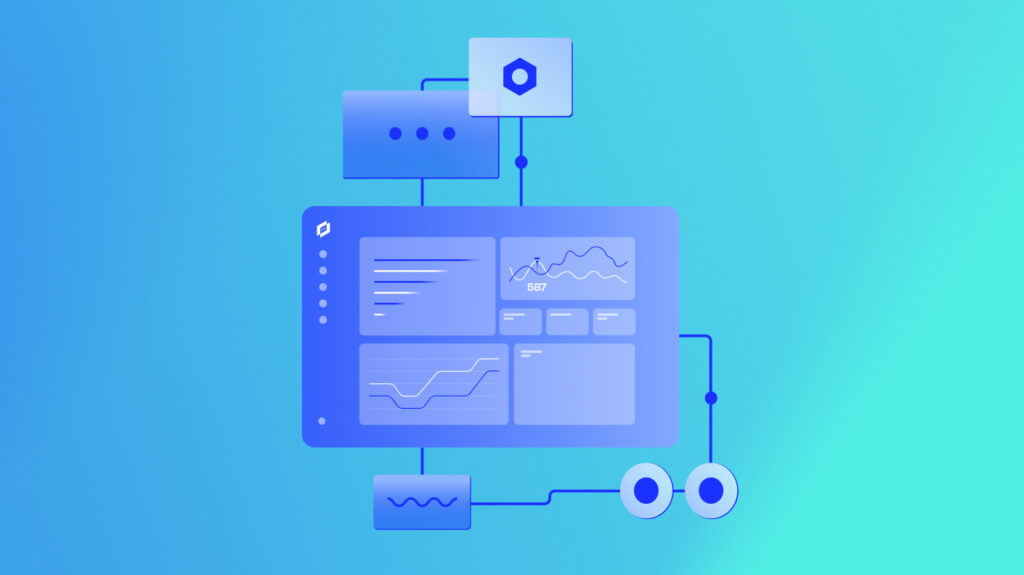Every minute of system downtime costs enterprises a minimum of $5,000. With IT infrastructure growing more complex by the day, companies are put at risk of even greater losses.
Adding insult to injury, traditional operations tools are woefully out of date. They can’t predict failures fast enough. They can’t scale with growing infrastructure. And they certainly can’t prevent that inevitable 3 AM crisis—the one where 47 engineers and product managers flood the war room, scrambling through calls and documentation to resolve a critical production issue.
Agentic AIOps flips the script. Unlike passive monitoring tools, it actively hunts down potential failures before they impact your business. It learns. It adapts. And most importantly, it acts—without waiting for human intervention.
This blog will show you how agentic AIOps transforms IT from reactive to predictive, why delaying implementation could cost millions, and how platforms like LogicMonitor Envision—the core observability platform—and Edwin AI can facilitate this transformation.
You’ll learn:
- What agentic AIOps is
- The core components driving agentic AIOps
- How agentic AIOps works
- A step-by-step guide to implementing agentic AIOps
- How agentic AIOps compares to traditional AIOps and related concepts
- Real-world use cases where agentic AIOps delivers measurable value
- The key benefits of agentic AIOps
- How LogicMonitor enables agentic AIOps success
What is agentic AIOps?
Agentic AIOps redefines IT operations by combining generative AI and agentic AI with cross-domain observability to autonomously detect, diagnose, and resolve infrastructure issues.
For IT teams floundering in alerts, juggling tools, and scrambling during incidents, this shift is transformative. Unlike traditional tools that merely detect issues, agentic AIOps understands them. It doesn’t just send alerts—it actively hunts down root causes across your entire IT ecosystem, learning and adapting to your environment in real time.
Agentic AIOps is more than a monitoring tool; it’s a paradigm shift. It unifies observability, resolves routine issues automatically, and surfaces strategic insights your team would otherwise miss. This is achieved through:
- Operating autonomously, learning and adapting in real time.
- Unifying observability across the entire infrastructure, minimizing blind spots.
- Automatically resolving routine issues, while surfacing critical insights.
With its zero-maintenance architecture, there’s no need for constant rule updates or alert tuning. The generative interface simplifies troubleshooting by transforming complex issues into actionable steps and clear summaries.
Agentic AIOps isn’t just a tool—it’s essential for the future of IT operations.
Why is agentic AIOps important?
As IT systems grow more complex—spanning hybrid environments, cloud, on-premises, and third-party services—the challenges of managing them multiply. Data gets scattered across platforms, causing fragmentation and alert overload.
Traditional AIOps can’t keep up. Static rules and predefined thresholds fail to handle the dynamic nature of modern IT. These systems:
- Require constant manual tuning
- Struggle to connect disparate data
- Are reactive, not proactive
As a result, IT teams waste time piecing together data, hunting down issues, and scrambling to prevent cascading failures. Every minute spent is costly.
Agentic AIOps changes that. By shifting to a proactive approach, it automatically detects and resolves issues before they escalate. This not only reduces downtime but also cuts operational costs.
With agentic AIOps, IT teams are freed from routine firefighting and can focus on driving innovation. By unifying observability and automating resolutions, it removes the noise, enhances efficiency, and supports smarter decision-making.
| Traditional AIOps | Agentic AIOps |
| Relies on static rules | Learns and adapts in real time |
| Requires constant updates to rules and thresholds | Zero-maintenance |
| Data is often siloed and hard to connect | Comprehensive view across all systems |
| Reactive | Proactive |
| Time-consuming troubleshooting | Actionable, clear next steps |
| Teams are overwhelmed with alerts and firefighting | Automates routine issue resolution, freeing teams for higher-value tasks. |
| Struggles with cross-functional visibility | Cross-tool integration |
| Noisy alerts | Filters out noise |
Key components of agentic AIOps
Enterprise IT operations are trapped in a costly paradox: despite pouring resources into monitoring tools, outages continue to drain millions, and digital transformation often falls short. The key to breaking this cycle lies in two game-changing components that power agentic AIOps:
Generative AI and agentic AI power autonomous decision-making
Agentic AIOps is powered by the complementary strengths of generative AI and agentic AI.
While generative AI creates insights, content, and recommendations, agentic AI takes the critical step of making autonomous decisions and executing actions in real-time. Together, they enable a level of proactive IT management previously beyond reach.
Here’s how the two technologies work in tandem:
- Generative AI: This component generates meaningful content from raw data, such as plain-language summaries, root cause analyses, and step-by-step guides for remediation. It transforms complex technical data into easily digestible insights and recommendations. In short, generative AI clarifies the situation, offering valuable context and potential solutions.
- Agentic AI: Once insights are generated by the system, agentic AI takes over. It doesn’t simply offer suggestions; it actively makes decisions and implements them based on real-time data. This allows the system to autonomously resolve issues, such as rolling back configurations, scaling resources, or initiating failovers without human intervention.
By combining the strengths of both, agentic AIOps transcends traditional IT monitoring. It enables the system to shift from a reactive stance—where IT teams only respond to problems—to a proactive approach where it can predict and prevent issues before they affect operations.
Why this matters
Instead of simply alerting IT teams when something goes wrong, generative AI sifts through data to uncover the underlying cause, offering clear, actionable insights. For example, if an application begins to slow down, generative AI might pinpoint the bottleneck, suggest the next steps, and even generate a root cause analysis.
But it’s agentic AI that takes the reins from there, autonomously deciding how to respond—whether by rolling back a recent update, reallocating resources, or triggering a failover to ensure continuity.
This ability to not only detect but also act, reduces downtime, cuts operational costs, and enhances system reliability. IT teams are freed from the constant cycle of fire-fighting, instead managing and preventing issues before they impact business operations.
Cross-domain observability provides complete operational visibility
Fragmented visibility creates significant business risks, but cross-domain observability mitigates these by integrating data across all IT environments—cloud, on-prem, and containerized—while breaking down silos and providing real-time, actionable insights. This capability is essential for agentic AIOps, transforming IT from a reactive cost center to a proactive business driver.
Here’s how it works:
- Data integration: Cross-domain observability connects structured data (like metrics and logs) with unstructured data (such as team conversations and incident reports) into a unified stream, ensuring no critical data is missed. This complete integration empowers agentic AIOps to detect and resolve issues across your entire IT ecosystem without human intervention.
- Dynamic response: Unlike traditional systems that wait for manual adjustments, agentic AIOps continually adapts to evolving conditions in real-time. Through intelligent event correlation and predictive modeling, it autonomously adjusts operations to mitigate risks as they arise.
With agentic AIOps, you gain what traditional IT operations can’t offer: autonomous, intelligent operations that scale with your business, delivering both speed and efficiency.
Why this matters
Cross-domain observability is essential to unlocking the full potential of agentic AIOps. It goes beyond data collection by providing real-time insights into the entire IT landscape, integrating both structured and unstructured data into a unified platform. This gives agentic AIOps the context it needs to make swift, autonomous decisions and resolve issues without manual oversight.
By minimizing blind spots, offering real-time system mapping, and providing critical context for decision-making, it enables agentic AIOps to act proactively, preventing disruptions before they escalate. This shift from reactive to intelligent, autonomous management creates a resilient and scalable IT environment, driving both speed and efficiency.
How does agentic AIOps work?
Agentic AIOps simplifies complex IT environments by processing data across the entire infrastructure. It uses AI to detect, diagnose, and predict issues, enabling faster, smarter decisions and proactive management to optimize performance and reduce downtime.
Comprehensive data integration
Modern IT infrastructures generate an overwhelming amount of data, from application logs to network metrics and security alerts. Agentic AIOps captures and integrates both structured (metrics, logs, traces) and unstructured data (like incident reports and team communications) across all operational domains. This unified, cross-domain visibility ensures no area is overlooked, eliminating blind spots and offering a comprehensive, real-time view of your entire infrastructure.
Real-time intelligent analysis
While traditional systems bombard IT teams with alerts, agentic AIOps uses generative and agentic AI to go beyond simply detecting patterns. It processes millions of data points per second, predicting disruptions before they occur. With continuous, autonomous learning, it adapts to changes without needing manual rule adjustments, offering smarter insights and more precise solutions.
Actionable intelligence generation
Unlike standard monitoring tools, agentic AIOps doesn’t just flag problems—it generates actionable, AI-powered recommendations. Using large language models (LLMs), it provides clear, contextual resolutions in plain language, easily digestible by both technical and non-technical users. Retrieval-augmented generation (RAG) ensures these insights are drawn from the most up-to-date and relevant data.
Autonomous resolution
This is where agentic AIOps stands apart: when it detects an issue, it takes action. Whether it’s scaling resources, rerouting traffic, or rolling back configurations, the system acts autonomously to prevent business disruption. This eliminates the need for manual intervention, allowing IT teams to focus on higher-level strategy.
Now—imagine during a product launch, the agentic AIOps system detects a 2% degradation in database performance. It could immediately correlate the issue with a recent change, analyze the potential impact—$27,000 per minute—and autonomously roll back the change. The system would then document the incident for future prevention. In just seconds, the problem would be resolved with minimal business impact.
Agentic AIOps stands out by shifting IT operations from constant firefighting to proactive, intelligent management. By improving efficiency, reducing downtime, and bridging the IT skills gap, it ensures your IT infrastructure stays ahead of disruptions and scales seamlessly with your evolving business needs.
Implementing agentic AIOps
Implementing agentic AIOps requires a strategic approach to ensure that your IT operations become more efficient, autonomous, and proactive.
Here’s a step-by-step framework for getting started:
- Assess your current IT infrastructure: Begin by understanding the complexity and gaps in your existing systems. Identify the areas where you’re struggling with scalability, visibility, or reliability. This will help you pinpoint where agentic AIOps can drive the most impact.
- Identify pain points: Take a deep dive into the challenges your IT team faces daily. Whether it’s alert fatigue, delayed incident resolution, or inadequate cross-domain visibility, recognize where agentic AIOps can make the biggest difference. The goal is to streamline processes and reduce friction in areas that are stalling progress.
- Choose the right tools and platforms: Select a platform that integrates observability and AIOps. For example, LogicMonitor Envision offers an all-in-one solution to bring together cross-domain observability with intelligent operations. Additionally, consider tools like Edwin AI for AI-powered incident management to automate and prioritize issues based on business impact.
- Plan a phased implementation strategy: Start with a pilot project to test the solution in a controlled environment. Use this phase to refine processes, iron out any issues, and collect feedback. Then, roll out the solution in stages across different parts of the organization. This phased approach reduces risk and ensures smooth adoption.
- Monitor and refine processes: Once your solution is live, continuously monitor its impact on IT efficiency and business outcomes. Track key metrics such as incident resolution time, alert volume, and downtime reduction. Be prepared to adjust processes as needed to ensure maximum effectiveness.
- Foster a culture of innovation and agility: For agentic AIOps to succeed, it’s important to build a culture that values continuous improvement and agility. Encourage your team to embrace new technologies and adapt quickly to evolving needs. This mindset will optimize the value of agentic AIOps, ensuring your IT operations stay ahead of disruptions.
We all know this part — getting started is often the hardest step, especially when you’re tackling something as transformative as agentic AIOps. But here’s the thing: you can’t afford to ignore the “why” behind the change. Without a clear plan, these innovations are just shiny tools that won’t stick. Your approach matters, because how you introduce agentic AIOps to your IT infrastructure is the difference between success and just another attempt at change that doesn’t stick.
Comparing agentic AIOps to related concepts
When you’re diving into the world of IT operations, it’s easy to get lost in the sea of buzzwords. Terms like AIOps, DevOps, and ITSM can blur together, but understanding the distinctions is crucial for making informed decisions about your IT strategy. Let’s break down agentic AIOps and see how it compares to some of the most common concepts in the space.
Agentic AIOps vs. traditional AIOps
Traditional AIOps typically relies on predefined rules and static thresholds to detect anomalies or failures. When these thresholds are crossed, human intervention is often required to adjust or respond. It’s reactive at its core, often requiring manual adjustments to keep the system running smoothly.
On the other hand, agentic AIOps takes autonomy to the next level. It learns from past incidents and adapts automatically to changes in the IT environment. This means it can not only detect problems in real time but also act proactively, providing insights and recommendations without the need for manual intervention. It’s the difference between being reactive and staying ahead of potential issues before they become full-blown problems.
Agentic AIOps vs. DevOps
DevOps is all about breaking down silos between development and operations teams to speed up software delivery and improve collaboration. It focuses on automating processes in the development lifecycle, making it easier to release updates and maintain systems.
Agentic AIOps, while complementary to DevOps, adds another layer to the IT operations landscape. It enhances DevOps by automating and optimizing IT operations, providing real-time, intelligent insights that can drive more informed decision-making. Instead of just focusing on collaboration, agentic AIOps automates responses to incidents and continuously improves systems, allowing DevOps teams to focus more on innovation and less on firefighting.
Agentic AIOps vs. MLOps
MLOps focuses on managing the lifecycle of machine learning models, from training to deployment and monitoring. It’s designed to streamline machine learning processes and ensure that models perform as expected in real-world environments.
Agentic AIOps also uses machine learning but applies it in a different context. It doesn’t just manage models; it’s geared toward optimizing IT operations. By leveraging AI, agentic AIOps can automatically detect, respond to, and prevent incidents in your IT infrastructure. While MLOps focuses on the performance of individual models, agentic AIOps focuses on the larger picture—improving the overall IT environment through AI-driven automation.
Agentic AIOps vs. ITSM
ITSM (IT Service Management) is about ensuring that IT services are aligned with business needs. It focuses on managing and delivering IT services efficiently, from incident management to change control, and typically relies on human intervention to resolve issues and improve service delivery.
Agentic AIOps enhances ITSM by bringing automation and intelligence into the equation. While ITSM handles service management, agentic AIOps can automate the detection and resolution of incidents, improving efficiency and dramatically reducing resolution times. It makes IT operations smarter by predicting problems and addressing them before they impact users or business outcomes.
By comparing agentic AIOps to these related concepts, it becomes clear that it stands out as a transformative force in IT operations. While other systems may focus on specific aspects of IT management or software development, agentic AIOps brings automation, intelligence, and proactive management across the entire IT ecosystem—making it a game-changer for businesses looking to stay ahead in the digital age.
Agentic AIOps use cases
When it comes to implementing agentic AIOps, the possibilities are vast. From reducing downtime to driving proactive infrastructure management, agentic AIOps has the potential to transform IT operations across industries. Let’s dive into some specific use cases where this technology shines, showcasing how it can solve real-world problems and drive value for businesses.
Incident response and downtime reduction
One of the core strengths of agentic AIOps is its ability to detect performance degradation in real-time. When an issue arises, agentic AIOps doesn’t wait for a human to notice the problem. It immediately analyzes the situation, correlates relevant data, and generates a root cause analysis. The system can then recommend solutions to restore performance before end users are affected. In cases where downtime is minimized, the system works swiftly, ensuring minimal disruption to the business.
Predictive maintenance and asset management
Asset management can be a challenge when it comes to proactively monitoring IT infrastructure. Agentic AIOps addresses this by analyzing performance data and detecting early signs of degradation in hardware or software. By identifying these issues before they become critical, the system can suggest optimal maintenance schedules or even recommend parts replacements to prevent failures. This predictive capability helps reduce unplanned downtime and ensures smooth operations.
Security incident management
In today’s digital landscape, cybersecurity is more important than ever. Agentic AIOps plays a vital role in enhancing security by identifying unusual network activity that may indicate a potential threat. It can match this activity to known threats, isolate the affected areas, and provide step-by-step guides for IT teams to contain the threat. The system’s proactive approach reduces the likelihood of security breaches and accelerates the response time when incidents occur.
Digital transformation and IT modernization
As organizations modernize their IT infrastructure and embrace digital transformation, cloud migration becomes a key challenge. Agentic AIOps streamlines this process by analyzing dependencies, identifying migration issues, and even automating parts of the data migration process. By ensuring a smooth transition to the cloud, businesses can maintain operational continuity and achieve greater flexibility in their infrastructure.
Better customer experience
The customer experience often hinges on the reliability and performance of the underlying IT systems. Agentic AIOps monitors infrastructure to ensure optimal performance, identifying and resolving bottlenecks before they affect users. By optimizing resources and automating issue resolution, businesses can ensure a seamless user experience that builds customer satisfaction and loyalty.
Proactive infrastructure optimization
As organizations scale, managing cloud resources efficiently becomes more critical. Agentic AIOps continuously monitors cloud resource usage, identifying underutilized instances and recommending adjustments to workloads. By optimizing infrastructure usage, businesses can reduce costs, improve resource allocation, and ensure that their IT environment is always running at peak efficiency.
H3: Hybrid and multi-cloud management
For companies using hybrid or multi-cloud environments, managing a complex IT ecosystem can be overwhelming. A hybrid observability platform can gathers real-time data from on-premises systems and cloud environments, while agentic AIOps analyzes patterns, detects anomalies, and automates responses—together delivering a unified, intelligent view of the entire infrastructure. With this comprehensive visibility, organizations can optimize resources across their IT landscape and ensure that security policies remain consistent, regardless of where their data or workloads reside.
Data-driven decision making
Agentic AIOps empowers IT teams with data-driven insights by aggregating and analyzing large volumes of performance data. This intelligence can then be used for informed decision-making, helping businesses with capacity planning, resource allocation, and even forecasting future infrastructure needs. By providing actionable insights, agentic AIOps helps organizations make smarter, more strategic decisions that drive long-term success.
These use cases illustrate just a fraction of what agentic AIOps can do. From improving operational efficiency to enhancing security, this technology can bring measurable benefits across many aspects of IT management. By proactively addressing issues, optimizing resources, and providing intelligent insights, agentic AIOps empowers organizations to stay ahead of disruptions and position themselves for long-term success in an increasingly complex IT landscape.
Benefits of agentic AIOps
Let’s face it: there’s no time for fluff when it comes to business decisions. If your IT operations aren’t running efficiently, it’s not just a minor inconvenience—it’s a drain on resources, a threat to your bottom line, and a barrier to growth. Agentic AIOps isn’t just about solving problems—it’s about preventing them, optimizing resources, and driving smarter business decisions. Here’s how agentic AIOps transforms your IT landscape and delivers measurable benefits.
Improved efficiency and productivity
In an age where time is money, agentic AIOps excels at cutting down the noise. By filtering alerts and reducing unnecessary notifications, the system helps IT teams focus on what truly matters, saving valuable time and resources. It also automates root cause analysis, enabling teams to resolve issues faster and boosting overall productivity. With agentic AIOps, your IT operations become leaner and more efficient, empowering teams to act with precision.
Reduced incident risks
Every minute spent resolving critical incidents costs your business. Agentic AIOps significantly reduces response times for high-priority incidents (P0 and P1), ensuring that issues are identified, analyzed, and addressed swiftly. By preventing service disruptions and reducing downtime, agentic AIOps helps you maintain business continuity and minimize the impact of incidents on your operations.
Reduced war room time
When disaster strikes, teams often scramble into “war rooms” to fix the problem. These high-stress environments can drain energy and focus. Agentic AIOps streamlines this process by quickly diagnosing issues and providing actionable insights, reducing the need for lengthy, high-pressure meetings. With less time spent managing crises, your IT teams can redirect their focus to strategic, value-driving tasks that move the business forward.
Bridging the IT skills gap
The demand for specialized IT skills often exceeds supply, leaving organizations scrambling to fill critical positions. Agentic AIOps alleviates this challenge by automating complex tasks that once required deep expertise. With this level of automation, even teams with limited specialized skills can handle sophisticated IT operations and manage more with less. This ultimately reduces reliance on niche talent and ensures your IT team can operate at full capacity.
Cost savings
Cost control is always top of mind for any organization, and agentic AIOps delivers on this front. By automating routine tasks and improving response times, the platform helps reduce labor costs and increase overall productivity. Additionally, its ability to prevent costly outages and minimize downtime contributes to a more cost-effective IT operation, offering significant savings in the long run.
In short, agentic AIOps doesn’t just make IT operations more efficient—it transforms them into a proactive, intelligent force that drives productivity, reduces risks, and delivers lasting cost savings. In a world where the competition is fierce, this level of optimization gives organizations the edge they need to stay ahead and scale effortlessly.
How LogicMonitor enables agentic AIOps success
Let’s be honest for a moment: the path to operational excellence isn’t paved with half-measures. It’s paved with the right tools—tools that not only keep the lights on but that proactively prevent the lights from ever flickering.
LogicMonitor is one such tool that enables agentic AIOps to thrive. By integrating observability with intelligence, LogicMonitor creates the foundation for successful AIOps implementation, making your IT operations smarter, more agile, and more efficient.
LM Envision: Comprehensive observability across hybrid environments
When it comes to achieving true agentic AIOps success, visibility is everything. LM Envision provides comprehensive, end-to-end observability across your entire hybrid IT environment. It delivers real-time data collection and analysis, empowering proactive insights that help you stay ahead of issues before they escalate. As the foundation of your agentic AIOps strategy, LM Envision enables seamless integration, providing the visibility and insights needed to optimize system performance and reduce downtime.
The scalability and flexibility of LM Envision ensures that as your business grows and IT complexity increases, your ability to monitor and manage your infrastructure does as well. Whether you’re operating on-premises, in the cloud, or in hybrid environments, LM Envision adapts, feeding your agentic AIOps system with the critical data it needs to function at peak performance. With LM Envision, you’re always a step ahead, shifting from reactive to proactive IT management and making smarter decisions based on real-time data.
Edwin AI: AI-powered incident management
In the world of agentic AIOps, speed and accuracy are paramount when it comes to incident management. That’s where Edwin AI comes in. As an AI-powered incident management tool, Edwin AI makes agentic AIOps possible by streamlining event intelligence, troubleshooting, and incident response. It automates critical processes, consolidating data from multiple sources to offer real-time incident summaries, auto-correlation of related events, and actionable insights—all while cutting through the noise.
With Edwin AI, teams no longer waste time dealing with irrelevant alerts. By filtering out the noise and presenting the most pertinent information, it speeds up incident resolution and minimizes downtime. One of its standout features is its ability to integrate with a variety of other tools, creating cross-functional visibility and enabling smarter decision-making.
Moreover, Edwin AI offers customizable models, ensuring that its insights are tailored to the unique needs of your organization. It simplifies complex technical details into plain language, enabling all team members—regardless of technical expertise—to understand the situation and take swift action. With Edwin AI, your teams can move faster, more confidently, and with greater precision, all while minimizing the risk of service disruption.
Together, LM Envision and Edwin AI form the ultimate platform for driving agentic AIOps success. By pairing observability with intelligent, autonomous incident management, these tools enable businesses to optimize operations, improve efficiency, and ultimately ensure a more proactive and resilient IT infrastructure.
Why enterprises must act now
Here’s the hard truth: if you don’t act now, you’ll fall behind. The future of IT operations is here, and it’s powered by agentic AIOps. The age of AI (GenAI) is reshaping everything, and companies that don’t harness its power risk being left in the dust.
Early adopters have the chance to redefine performance and cost efficiency. Agentic AIOps isn’t just about keeping up—it’s about staying ahead. Those who implement it today will not only meet the demands of tomorrow, they’ll shape them.
No more chasing buzzwords or empty promises. Organizations are looking for practical, scalable solutions that work. Agentic AI automates the routine so your teams can focus on what truly matters: innovation and strategic impact.
IT leaders know this: the future isn’t waiting. Adapt now or risk being irrelevant.
Subscribe to our blog
Get articles like this delivered straight to your inbox









